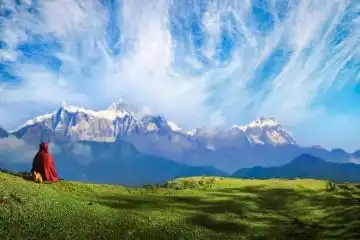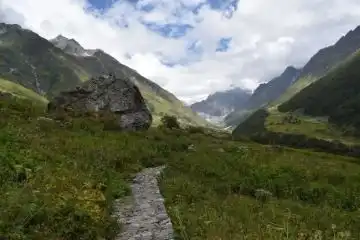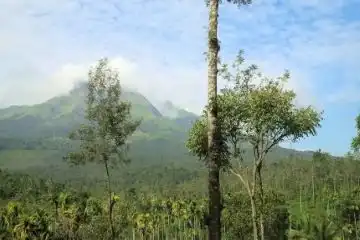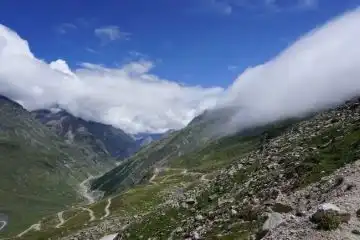Navigate the mountains Best travel tips for Indian hill stations
Exploring the serene beauty of India's hill stations is a dream for many travelers. Here are the best travel tips for Indian hill stations to ensure a safe and unforgettable experience. Whether you're seeking adventure, relaxation, or a cultural escape, the mountains have something for everyone. However, navigating the hills comes with its challenges. From unpredictable weather to high-altitude sickness, a well-prepared traveler can make the most of their trip.
1. Choose the Right Hill Station for Your Travel Goals
India is home to diverse hill stations, each offering unique experiences. You may want to explore the lush greenery of Munnar or the colonial charm of Shimla. Further, you may be wishing to enjoy an adventure-packed terrains of Manali. In any case, selecting the right destination is crucial. With our guide to discover the allure of Saiha you can make the most of your the journey. Research the climate, accessibility, and activities available to align with your travel expectations. If you are a wildlife enthusiast, consider places for example Coorg or Ooty. That are firstly known for their rich biodiversity. For those looking for an offbeat experience, visit Tawang or Spiti Valley, where nature meets solitude.
2. Plan Your Travel During the Right Season
Weather conditions in hill stations vary significantly. While summer (March to June) is ideal for escaping the heat, winter (December to February) attracts snow lovers. Monsoons (July to September) bring scenic beauty but can also lead to landslides and travel disruptions. Choose your travel window wisely to enjoy the best experience. If you are keen on trekking, post-monsoon months (September to November) offer clear skies and breathtaking views. For festival lovers, visiting during local celebrations like Hemis Festival in Ladakh or Losar in Sikkim can add cultural richness to your trip.
3. Pack Smart for Mountain Travel
As per travel tips for Indian hill stations tour, packing light yet effectively is key when heading to the hills. Essentials include warm clothing, sturdy trekking shoes, rain gear, sunscreen, sunglasses, and essential medicines. Layering your clothes helps adjust to varying temperatures, ensuring comfort throughout the trip. In addition, carry a power bank, a flashlight, and a reusable water bottle to stay hydrated. If you're planning outdoor activities, consider packing energy bars. Further, take a portable oxygen canister (for high-altitude locations), and a Swiss army knife for emergencies.
4. Be Prepared for High Altitude Sickness
Many Indian hill stations sit at high altitudes. Therefore, travelers may experience symptoms of altitude sickness, such as dizziness and nausea. Acclimatize gradually, stay hydrated, and avoid overexertion on the first day. Carry medications if needed, and consult a doctor before traveling to higher elevations. If you're heading to extreme altitudes like Leh or Spiti, consider staying in a mid-altitude location. Spend time at places for example Manali or Shimla for a day or two before ascending. Eating light meals and avoiding alcohol can also help minimize discomfort.
5. Use Local Transport or Hire Experienced Drivers
Navigating winding mountain roads can be tricky. If you're not confident in driving through steep curves, consider hiring a local driver. You can also use public transport like shared taxis or buses. Local drivers are familiar with the terrain and ensure safer travel. In addition, if you plan on renting a vehicle, opt for a four-wheel-drive car. As it offers better control on steep and rough roads. Many destinations further offer bike rentals, which are great for exploring nearby areas at your own pace.
6. Stay in Accommodations with Good Accessibility
Opt for accommodations near town centers or key attractions to avoid long, tiring commutes. Many hill stations have steep pathways. Therefore, choosing a stay with easy accessibility will save energy and enhance your experience. Homestays and boutique resorts often provide an immersive experience with stunning views and local hospitality. If you're an adventure traveler, consider staying in campsites or eco-lodges that bring you closer to nature while offering basic amenities.
7. Respect the Local Culture and Environment
Hill stations are not just tourist spots; they are home to many local communities. Respect their traditions, dress modestly, and avoid littering. Sustainable travel practices like using reusable bottles and avoiding plastic contribute to preserving the pristine environment. When visiting temples or monasteries, follow the dress code and maintain decorum. Support local artisans by purchasing handmade crafts instead of mass-produced souvenirs. Engaging with locals can also help you discover hidden gems that aren't on the typical tourist trail.
8. Try Local Cuisine and Delicacies
Above all, each hill station boasts its unique flavors. It may be Himachali Dham in Manali, momos in Darjeeling, or Kumaoni cuisine in Nainital. In short, indulging in local food enhances your travel experience. Visit local markets and eateries for authentic flavors. In North-Eastern hill stations for example Shillong and Gangtok, try delicacies like thukpa, bamboo shoot curry, and smoked meats. Street food lovers can enjoy piping hot Maggi at roadside dhabas. That is a staple in almost every mountain destination.
9. Stay Connected but Be Ready for Network Issues
Many hill stations have limited mobile network coverage. One of the travel tips for Indian hill stations tour is that you inform family and friends about your itinerary in advance. Carry alternative communication options for example offline maps. Download important documents and guides before heading to remote areas. If you need constant connectivity, consider buying a local SIM card with better coverage. Meanwhile, you can use Wi-Fi at cafes and hotels. Above all, satellite phones may be necessary for trekking in remote locations.
10. Carry Enough Cash and Essential Supplies
ATMs in hill stations may not always be functional. Therefore, digital payments may not be widely accepted in remote areas. As per travel tips for Indian hill stations journey, carry enough cash for emergencies. Stock up on necessary supplies for example snacks, first-aid kits, and travel essentials. If you're planning a long trek, carry essentials like extra batteries, a whistle, a multi-purpose tool, and an emergency blanket.
11. Engage in Adventure Activities Wisely
From trekking and paragliding to river rafting, adventure lovers have plenty to explore in the hills. Always choose certified operators, wear safety gear, and understand the risks before engaging in any activity. Above all, prioritize safety over thrill as per the travel tips for Indian hill stations. Meanwhile, check the weather forecast before booking any adventure activities. As conditions can change rapidly in mountainous regions. If you're attempting high-altitude treks, consider hiring a local guide to enhance safety and navigation.
12. Plan for Sustainable and Responsible Travel
Preserving the beauty of hill stations is a shared responsibility. Opt for eco-friendly stays, avoid excessive water usage, and respect wildlife. Traveling responsibly ensures these beautiful destinations remain unspoiled for future generations. Participate in eco-tourism initiatives for example tree-planting drives or waste-cleaning programs. Choose biodegradable toiletries and avoid activities that further disrupt the natural habitat.
Final Thoughts
Navigating the mountains becomes effortless with the right planning and mindset. By following these travel tips for Indian hill stations, you can ensure a seamless and memorable journey. Whether it's adventure, relaxation, or cultural exploration, the hills are calling. Therefore, pack wisely and embrace the experience!. Embrace the slower pace of mountain life, soak in the breathtaking views, and create memories that last a lifetime.




